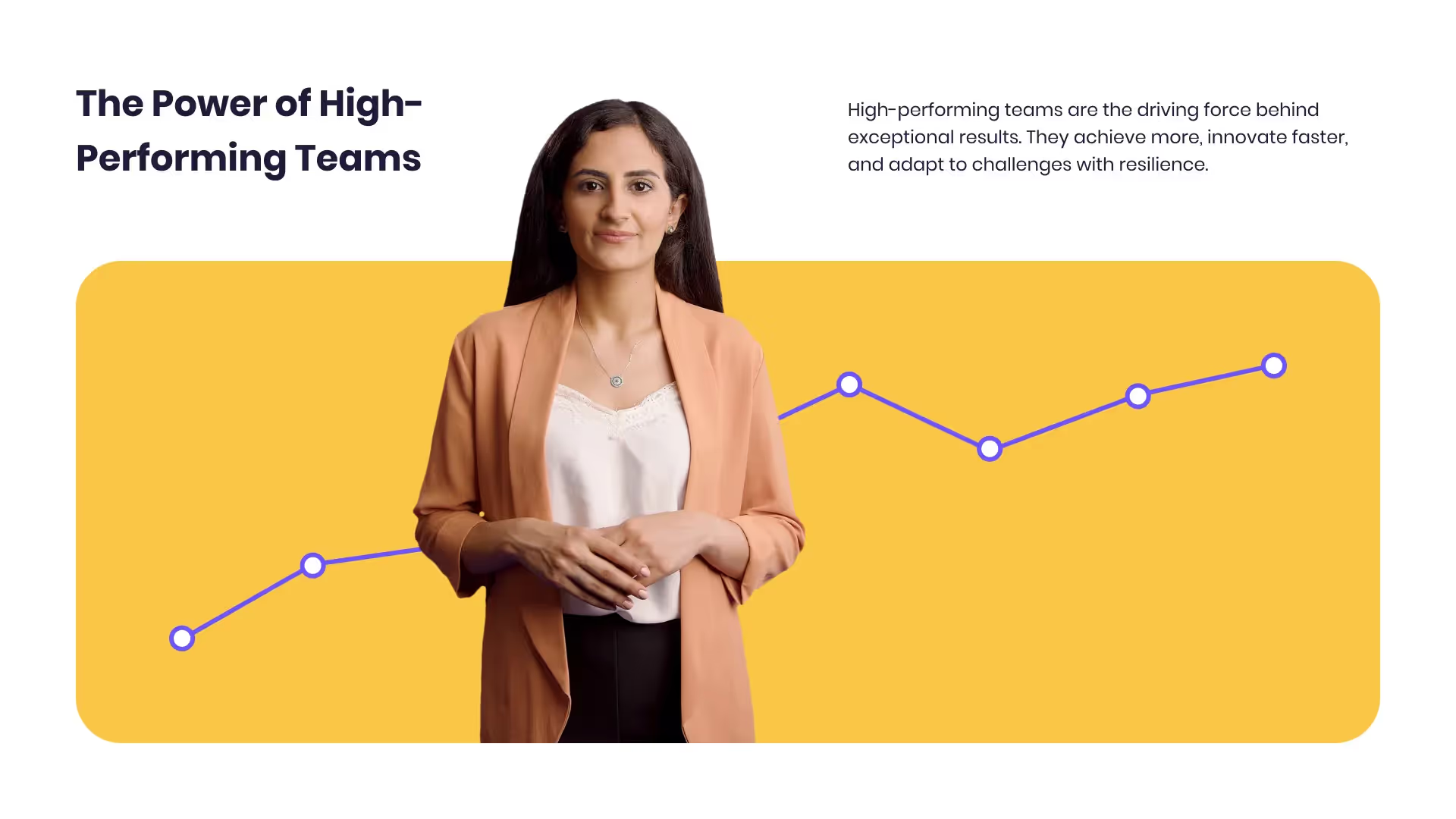.avif)
Want a personalised avatar?
Instant Avatars can be recorded using your phone or camera, and created in under a minute. These avatars are quick and easy to create, and they keep your original background and movements.

Creating Learning Experiences People Actually Want


According to a study run by Acorn, whilst 95% of professionals agree mastering their role-based skills is important, only 9% of them ever complete any training to move towards mastering these skills.
Closing this gap should be every L&D team’s #1 priority.
A giant roadblock in the way of fixing this issue is that a lot of traditional learning just doesn’t stick.
It isn’t exciting or engaging for learners, and can be seen as a chore or a have-to-do, because it’s built around systems (and boosting L&D vanity metrics) rather than people.
This blog is going to focus on how you can start working towards making your learning content more engaging by using core marketing principles to engage your learners.
Stop building for the LMS
The first step every L&D team needs to make their content more engaging is a bold one: stop building for the LMS.
We get it, the LMS is a great tool, and you spent a bunch of money on it. You probably have quarterly goals based on the data that your LMS gives you.
But focusing too much on the LMS when you create content is killing your L&D strategy.
The core issue is that people don’t learn in a linear, programmatic fashion. They don’t login every day to your LMS and complete a set of training.
They learn in moments, not modules.
Your LMS should be the place where you host content that supports your learners in the flow of work, not a place that disrupts their workflows by requesting they complete vanilla, boring training.
How do you get started ditching the LMS-first mindset?
Start with people, not content
The way marketing works is you don’t just dive headfirst into something with a Canva template and hope for the best.
You seek to understand your target audience first, their pain points and what they want or need. Then you talk to them about how you could potentially help solve that issue and tweak your messaging based on the engagement rate of your messaging.
L&D should take the same approach to ensure the content they’re creating is what users actually want.
Talk to your learners before getting started on content. Interview managers and key stakeholders, and run focus groups around a specific issue the business is having, and note everything down.
This will give you a clear picture of the learner's pain points. Then you can start drafting informed content that actually speaks to learners' needs.
Once you start doing this, you will have stopped just taking orders and producing content that is much more impactful.
It might be less overall content, but it will be much much higher quality and cut through the internal noise much clearer.
Treat learning like a product
What you produce in your L&D team should be seen as a product, rather than a checkbox.
And good products? They solve problems and are clear about how and why they solve them.
If your business has an issue with low sales numbers, your L&D content should be specifically and explicitly poised around solving this problem, not just a random e-module dropped into their inbox on sales outreach.
Good products are also adapted based on user feedback. Listen to your learners to determine if what you are producing is hitting the mark.
Most importantly, you should always provide a way to give feedback, and ensure communication is always two-way rather than just one-way.
Use campaign thinking
Great marketing is done in a campaign format, with multiple touchpoints and an evolving story over time.
Poor L&D is done with one email that goes to absolutely everyone one time and expects people to say “how high” when asked to jump.
Borrow lessons from the marketers and build multiple stages into your L&D campaign with reminders, nudges and additional content.
Also, work on your hooks.
Creating a compelling intro to your content that lures learners in, and you’ll start to see increased engagement rate, which is the foundation for building your feedback loop for creating more training.
Build trust with clear messaging
People won’t engage with learning if they don’t trust it will help them.
That means the message needs to be clear. No buzzwords. No hype. Just say what it is, why it matters, and how it helps.
Use consistent branding so people know it’s from you. Make it feel familiar and reliable.
Always answer the question: What’s in it for me?
If people don’t see the benefit, they won’t bother.
Test, learn, and improve
You won’t get everything right the first time. That’s normal.
What matters is what you do next.
Ask for feedback. Watch how people respond. Look at the data in a scientific way - but also listen to what they say.
Then make small changes. Try again.
Treat it like an ongoing process, not a finished product.
Make learning worth their time
Most people are busy. If you want them to choose learning, it needs to feel worth it.
That means it should be helpful, relevant, and easy to use.
The job of L&D isn’t just to create content. It’s to create learning people care about.
So before you build your next course, stop and ask someone what they actually need.
Start there.

Networking and Relationship Building
Use this template to produce videos on best practices for relationship building at work.

Developing high-performing teams
Customize this template with your leadership development training content.

Course Overview template
Create clear and engaging course introductions that help learners understand the purpose, structure, and expected outcomes of your training.
Frequently asked questions





Didn’t find the answer you were looking for?
















%20(1).avif)
.webp)

